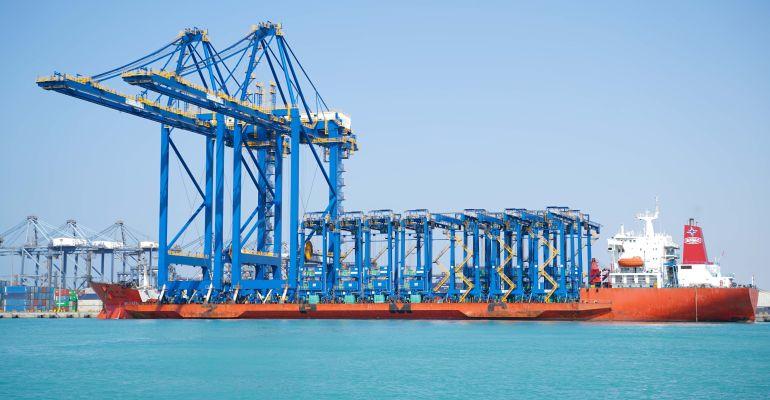RSGT has taken delivery of two state-of-the-art remote-controlled ship-to-shore (STS) cranes and 10 hybrid rubber-tyred gantry cranes (RTGs) as part of its latest planned expansion.
“RSGT is the largest logistics gateway and the largest container terminal in Saudi Arabia, and on the Red Sea. Our goal is to attract and grow the regional transhipment business through continuing providing world-class service to our customer’s vessels and hinterland supply chain,” said Jens Floe, ceo of RSGT.
The new 65-tonne twin-lift capacity STS cranes can accommodate the latest generation of ULCS of 24,000 teu capacity, with a 70-meter reach and a 52-meter height. RSGT is the only terminal at the port of Jeddah capable of accommodating such mega ships.
Manufactured by China’s ZPMC the new semi-automated STS cranes feature advanced technology such as remote control, Optical Character Scanning capability, chassis alignment, and automatic landing systems, vessel profiling, gantry, and trolley positioning systems, and intelligent status condition monitoring systems.
The new hybrid-RTGs will enhance environmentally sustainable terminal and yard operations by automatically switching to battery power from diesel power to optimise efficiency by reducing fuel consumption and greenhouse gas emissions during container handling operations.
By 2023, RSGT aims to deploy 24 super post-panamax quay cranes and 67 RTGs.
Plans are underway for a total investment of $1.7bn on RSGT’s infrastructure and equipment, ultimately increasing annual container throughput capacity to 8.8m teu.
Copyright © 2024. All rights reserved. Seatrade, a trading name of Informa Markets (UK) Limited.
Add Seatrade Maritime News to your Google News feed.  |

